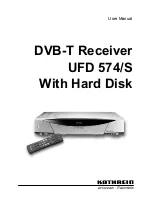
2 APRS OPERATIONS written by Bob Bruninga, WB4APR
6
TM-D710A/E
2.4 Kenwood Contributions
Kenwood has developed its series of transceivers, the TH-D7A/E, TM-D700A/E and TM-D710A/E
to best support the original objectives of APRS. The display of APRS information on the front
panel of these transceivers gives the mobile operator instantaneous access to all local information
being provided on the APRS channel about all surrounding ham radio activities.
There are many APRS clients and programs that have been written that sometimes have
concentrated too much on the display of maps and vehicle positions while leaving out much of the
original fundamentals of APRS and the efficiency of the APRS network in support of two-way local
area communications. The Kenwood transceivers have avoided that simplistic approach to APRS
by implementing a rich and full feature set that includes most of the original APRS features that
enhance this local information distribution concept. The Kenwood transceivers are not just
Vehicle Tracking Systems, but are designed to be Real-Time Information Distribution Systems for
mobile operators with these features:
• Position Entry:
The transceivers are not dependent on GPS for their value since manual
position entry and 5 common positions can be saved.
• Map Displays on attached GPS:
Although these transceivers provide Map plotting via
attached NMEA GPS units with map displays, the radios are fully functional without maps and
can display on their front panel all aspects of bulletins, messages, weather, as well as
information on the direction and distance to others including their antenna heights and gain.
• APRS Network Fundamentals:
Kenwood fully implemented the more subtle aspects of the
APRS fundamentals that assure optimum network efficiency and channel sharing among all
users. The new TM-D710A/E transceiver supports the decay algorithms and proportional
pathing. These two techniques provide good refresh rates for new and local information while
minimizing the network impact of old and distant data.
• Objects:
The Kenwood transceivers fully appreciate the value of APRS objects and display
them prominently. The object location is shown just like other stations either on the attached
map display or on the front panel with distance and range. These objects are what give APRS
the local information value to local users.
• Two-Way Messaging:
Unlike passive one-way tracking devices, the Kenwood transceivers
provide the mobile user with full two-way messaging and display. This real-time human-to-
human communications is what makes APRS so valuable in support of special events and
emergencies.
• Field Data Entry:
Although the Kenwood transceivers are excellent field data display devices,
their menus have also been designed for easy data, position and message entry. Often
overlooked is the ability to use a number of TH-D7A/E or even TM-D700A/E transceivers as
excellent field data entry and clipboard entry devices at many field events. See
www.ew.usna.edu/~bruninga/aprsevent.html
• Individual Information Access:
The Kenwood individual radio displays enhance the
distribution of ham radio information to a large number of users by giving them individual front
panel and key pad access to all of the online APRS data. A common mistake of fixed
operations with computers is the use of large display screens for large groups to see but which
fails to recognize that each individual viewer actually needs access to the keyboard to truly
access the individual APRS information he may need at any instant. The individuality of APRS
radios with individual displays spreads this data access throughout the field.
• Overlay Characters on all Symbols:
Although the Kenwood transceivers have always
displayed the overlay character of a subset of APRS symbols, the new TM-D710A/E has vastly
expanded the APRS symbol set by not only adding additional symbols, but more importantly
displaying and allowing the addition of an Overlay character on almost all APRS symbols. This
provides hundreds of new symbol combinations for better APRS application to new uses.
















































